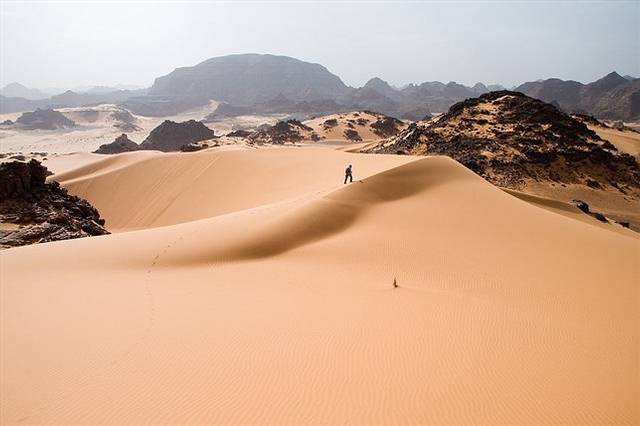The Sahara was ‘green’ for over 6,000 years and had 10 times more rain than now.

Through an analysis of marine sediments, researchers at the University of Arizona have determined rainfall patterns in the Sahara over a period of 6,000 years obtaining fascinating results. The UA-led team has identified the climate pattern that generated a “Green Sahara” from 5,000 to 11,000 years ago. The region had 10 times the rainfall it does today.
As it turns out, what is now the Sahara Desert was the home of hunter-gatherers who lived off the animals and plants present in the savannas of the region and off the wooded prairies sometime between 5,000 and 11,000 years ago.
“It was 10 times as wet as today,” said lead author Jessica Tierney of the University of Arizona. Annual rainfall in the Sahara now ranges from about 4 inches to less than 1 inch (100 to 35 mm).
Although other research has already identified the existence of a “Green Sahara” period, Tierney and colleagues managed to compile a continuous record of rainfall in the region that existed 25,000 years ago.
Interestingly, archaeological evidence shows that humans occupied much of the Sahara during the wet period, but gradually withdrew some 8,000 years ago.
Other researchers have suggested that the Sahara became drier by the time people left, but the evidence was inconclusive, says Tierney, an assistant professor of geosciences at the UA, whose work was published in Science Advances.

According to the new study, rainfall records gathered by the team indicate a period that lasted for one thousand years, some 8,000 years ago, in which the Sahara became drier, which coincides with the time when people left.
“It looks like this thousand-year dry period caused people to leave,” Tierney said.“What’s interesting is the people who came back after the dry period were different — most raised cattle. That dry period separates two different cultures. Our record provides a climate context for this change in occupation and lifestyle in the western Sahara.”
According to UA News, Instead of lake sediments, Tierney and her colleagues used cores of marine sediments taken off the coast of West Africa at four different sites. Because the cores were taken over a north-south distance of about 800 miles (1,300 km) — from offshore Cape Ghir, Morocco, to the northwestern corner of Mauritania — the cores revealed both the ancient rainfall patterns and the areal extent of the Green Sahara.
No comments:
Post a Comment